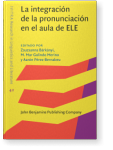Chapter 10
Crosslinguistic influence and the pronunciation of Spanish as an additional language
Crosslinguistic influence is a main culprit in nonnative speech production. The native tongue’s
(L1) phonic space warps and usually distorts the phonic spaces of languages learned later in life (L2), causing not
only a foreign accent, but also issues in intelligibility and comprehensibility. This chapter will address: (1) how
crosslinguistic transfer fits into the causes of nonnative pronunciation; (2) to which extent language differences
have an impact on perception and production of L2 speech patterns; (3) what are the consequences of a foreign accent
in terms of intelligibility and comprehensibility; (4) how segmentals and suprasegmentals in L2 Spanish are subject to
the phonic pull of L1; and (5) what strategies and activities can help to improve L2 pronunciation.
Article outline
- 1.Introduction
- 2.Key concepts and main research in the field
- 2.1Perception and production in additional languages
- 2.2Foreign accent, intelligibility, and comprehensibility
- 3.Some examples of crosslinguistic mismatches
- 3.1The vowel systems of English and Spanish
- 3.2Stop systems in English and Spanish
- 4.From theory to practice
- 5.A look into the future
-
Notes
-
References
This content is being prepared for publication; it may be subject to changes.
